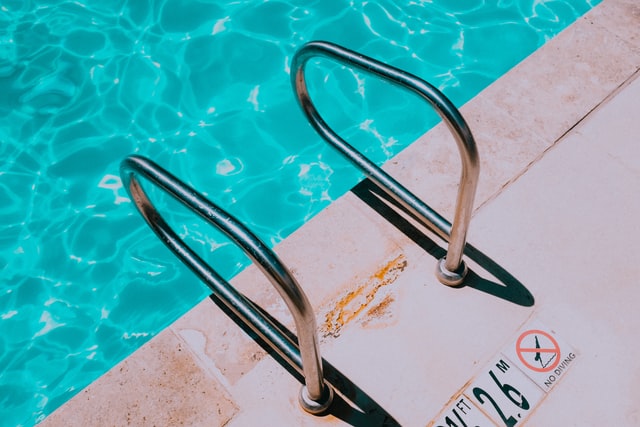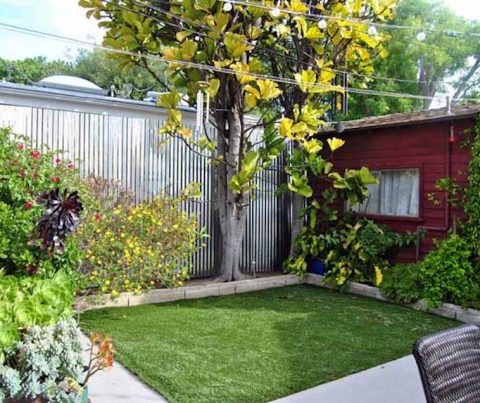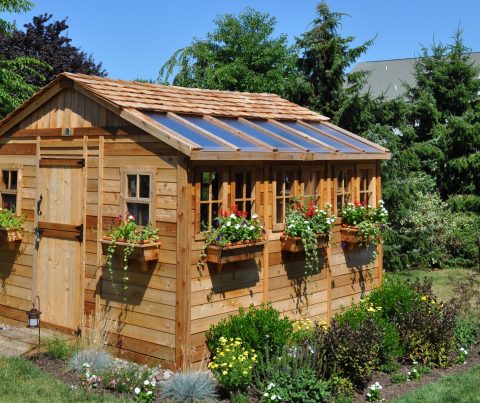Enjoying a day of swimming in your pool is a great way to get some exercise and have fun with family and friends. If you have a pool in your backyard, it’s important to practice proper pool safety at all times. When you understand the basics of pool safety, you can keep your friends and family members safe whenever they come over to take a dip. Sadly, an average of 3,500 to 4,000 people drown each year in the United States, and approximately 87-percent of drownings in children under the age of five occur in pools or hot tubs. Drownings are the number-one leading cause of death in children ages one to four. The reality is that most drownings are preventable with the proper safety practices in place. Drowning can lead to heartache, and it can also have serious legal liability and other implications for pool owners. As a pool and property owner, you can be fully legally liable if someone drowns while in your pool, which is just one more reason that pool safety is so important. Read on to learn more about pool safety and how you can practice it at home, at a water park, and in public pools.
Where to Start
It’s easy to get started on pool safety with a few simple tips. Here are various ways to practice pool safety to keep yourself and your loved ones safe while they swim.
Secure the Pool Area
The first step in pool and water safety is to ensure that the area around your pool is adequately secured. Keep these tips in mind to secure your pool when not in use.
Use fencing: Surround the entire perimeter of your pool with sturdy, four-sided isolation fencing that includes a self-closing and self-latching gate. Make sure that the gate and latch are out of the reach of children. Simply having a four-sided isolation fence with a locking gate may reduce the risk of a child drowning by 83-percent.
Secure above-ground pools: If you have an above-ground pool, make sure you keep all steps or ladders secure or remove them when not in use. Remove anything that could be used to access the pool, including lawn furniture and toys, when the pool isn’t supervised.
Secondary barriers: Gate or door alarms and locks can add another layer of protection against unsupervised children getting into the pool. You can also add these alarms to doors and windows that offer direct access to the pool. Lockable pool covers also add an effective additional barrier to the pool.
Pool Safety Rules
It’s essential to establish clear pool safety rules that apply to everyone, including:
- Don’t enter the pool head-first: Do not allow your guests to jump into the pool head-first unless it’s in an area of the pool specifically designated for safe diving.
- Stay away from drains: Be aware of drains and other openings in the pool that can cause suction, and make sure everyone avoids these areas while they swim.
- Swim with a buddy: It’s always best to swim in your pool with at least one other friend or family member. If something happens, you have a much better chance of survival if you’re swimming with a buddy who can provide first aid and get you the help you need.
- Never swim drunk: Always make sure that you swim while sober. Swimming while under the influence can impair your senses and make it difficult to judge things like distance or time spent underwater.
- Enlist the help of a pool-watcher: Designate someone to be the “lifeguard” while you and your guests go for a swim. This person should be sober and avoid distractions like using their smartphone, so they can keep a close eye on everyone while they swim.
- Learn CPR: Enroll in a CPR class, so you have the ability to perform it in the event of an emergency.
- Stay vigilant: Never allow children to swim in the pool without proper supervision. If someone gets tired, make sure they take breaks to help prevent accidental drownings or other accidents.
Teach Your Family to Swim: FAQs
If you have a pool, it’s vital that all of your family members learn to swim. Here are some frequently asked questions and answers about swimming lessons and why they’re so important.
- Why should I get the family lessons? Enrolling the entire family in swimming lessons is one of the best ways to prevent accidental drownings. Not only will you all have fun learning to swim, but you’ll also feel much more confident whenever you get into the pool.
- How young should kids learn to swim? The age that your child can take swimming lessons depends on their individual development. Overall, children can begin to learn how to swim as young as age 1. If you are concerned that this age is too young, children ages four and older can start swimming lessons to help prevent drowning. These lessons will allow them to develop proper swimming skills and techniques and can also reduce the odds of drowning significantly. Swimming lessons for infants are not recommended since they don’t have the right motor skills and control to be in the water independently.
- What should I look for in a swim school or program? Make sure that you choose an age-appropriate swim program for your child led by experienced, qualified swimming instructors who are CPR and first aid certified. The lessons should teach kids good safety habits while they are in the water and when they’re near it. A lifeguard should always be present during these lessons, too. Find out if the swim school allows you to watch a class before deciding if it’s suitable for your child. Finally, be sure that the swim school requires multiple sessions so that your child can develop their skills gradually as they learn basic water safety and competency.
- Are affordable lessons available? You should be able to find affordable swimming lessons for the entire family. Check with your local government to find out if they offer low-cost programs. You can also ask local public pools if they hold swimming classes for kids and adults. Your local parks and rec department is another good resource to help you find budget-friendly lessons and accessible to every age group.
Get Certified in First Aid and CPR
One of the best ways to prevent drownings and practice good pool safety is getting certified in CPR and first aid. This can make a significant difference if you really know what you are doing since you might just save a life in the event of an emergency.
Learn the steps: Learn what the steps are to perform CPR so that you’re fully aware of the process. You can watch training videos online to help you better understand how to perform CPR safely.
Know proper pool first aid: Make sure you have a fully stocked first aid kit on hand whenever people swim in your pool. Understand how to use each item correctly and when first aid needs to be applied. If you’re unsure about a specific situation or if someone is seriously injured, call 911 for emergency services right away.
Use the Red Cross to find local courses: The Red Cross offers both local and virtual CPR and first aid certification courses. They also provide recertification programs and water safety courses too. These courses will help you be fully prepared in an emergency and teach you how to perform CPR and other first-aid using the proper approved methods.
Reduce Accident Liability
Keep these pool and hot tub safety tips in mind to protect the ones you love and to reduce your potential for liability in the event of an accident or drowning. Here’s an overview of important tips to help reduce your liability.
- Check to ensure that all fencing and gates completely surround your pool and that they are at least four feet high.
- Always use self-closing latches and gates that are too high for children to reach.
- A lockable pool cover that you can use to secure your pool when not in use is highly recommended.
- Get certified in CPR and ensure all first aid and rescue equipment is in working order and kept readily available near the pool.
- Always check the pool first if a child is missing or unable to be located.
- Consider installing a pool alarm that alerts you whenever the surface of the water is disturbed.
- Never allow children or adults to use the pool without proper supervision. Remove toys after swimming, so children aren’t tempted to go back into the pool alone.
- Avoid swimming while intoxicated, and never allow guests who have been drinking to swim in the pool or use the hot tub.
- Make sure everyone knows about your pool safety rules and require your guests to supervise their children at all times.
- Check your homeowner’s insurance policy to ensure that it covers any potential pool-related accidents. A $1 million minimum is recommended.
With some simple updates to protect your pool and constant vigilance, you can ensure that your pool is a safe place for everyone to enjoy. Enroll yourself and your children in swimming lessons and get certified in both CPR and first aid. Always make sure that your pool is supervised by a responsible adult when in use and secure it when it’s not in use. This is the best way to make sure that your pool is safe, fun, and enjoyable for many summers to come.



